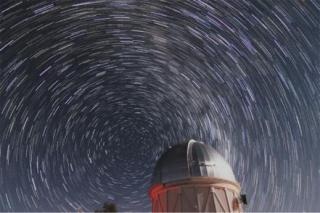Mar 14 2019
Researchers consider that the trihydrogen (H3+) molecule made the universe. In the latest issues of Nature Communications and the Journal of Chemical Physics, researchers from the Michigan State University have described the use of high-speed lasers to reveal the mechanisms that play a vital role in the creation and unusual chemistry of H3+.
 Marcos Dantus, University Distinguished Professor in chemistry and physics, has recreated interstellar ions with lasers. (Image credit: MSU)
Marcos Dantus, University Distinguished Professor in chemistry and physics, has recreated interstellar ions with lasers. (Image credit: MSU)
H3+ is omnipresent in the Milky Way, the universe, the Earth’s ionosphere, and gas giants. It is also being prepared and investigated in the lab of Marcos Dantus, University Distinguished Professor in chemistry and physics. A team of researchers has started to gain insights into the chemistry of this iconic molecule using ultrafast lasers, as well as technology invented by Dantus.
Observing how roaming H2 molecules evolve to H3+ is nothing short of astounding. We first documented this process using methanol; now we’ve been able to expand and duplicate this process in a number of molecules and identified a number of new pathways.
Marcos Dantus, University Distinguished Professor in chemistry and physics, Michigan State University.
However, astrochemists view the larger picture, observing H3+ and describing it through an interstellar perspective. It is developed so rapidly—in less time compared to the time taken for a bullet to cross an atom—that it is very challenging to find out how three chemical bonds are split and three new ones are formed within such a short period of time.
This is when chemists working with femtosecond lasers come into play. In spite of exploring the stars with the help of a telescope, Dantus and colleagues actually look at the smaller picture. The complete procedure is observed at the molecular level and measured in femtoseconds, or one-millionth of one-billionth of a second. The process observed by the researchers takes about 100–240 fs. Dantus is aware of this since the clock starts when the first laser pulse is fired. Then, the laser pulse “sees” what is happening.
The two-laser method demonstrated the hydrogen transfer, and also the hydrogen-roaming chemistry, which causes the formation of H3+. A neutral molecule (H2) is briefly produced by roaming mechanisms, where the molecule stays in the proximity and derives a third hydrogen molecule to form H3+. And as it has turned out, this can happen in more than just one way. In an experiment involving ethanol, the researchers demonstrated six potential pathways, validating four of them.
Due to the fact that laser pulses are comparable to sound waves, Dantus and colleagues found out a “tune” that optimizes the formation of H3+ and one that inhibits the formation. Conversion of these “shaped” pulses to a slide whistle leads to successful formation when the note begins flats, rises slightly, and ends with a downward, deeper dive. The song turns out to be music to the ears of chemists who can visualize various promising applications for this innovation.
These chemical reactions are the building blocks of life in the universe. The prevalence of roaming hydrogen molecules in high-energy chemical reactions involving organic molecules and organic ions is relevant not only for materials irradiated with lasers, but also materials and tissues irradiated with x-rays, high energy electrons, positrons and more.
Marcos Dantus, University Distinguished Professor in chemistry and physics, Michigan State University.
This research unravels chemistry that is relevant with respect to the formation of universe with water and organic molecules. He added that the mysteries it could unravel, from medical to astrochemical, are limitless.
MSU researchers who contributed to the Nature Communications paper included Nagitha Ekanayake, Muath Nairat, Nicholas Weingartz, Benjamin Farris, Benjamin Levine, and James Jackson. Researchers from Kansas State University also contributed to this research.
MSU researchers who contributed to the Journal of Chemical Physics paper included Ekanayake, Nairat, Matthew Michie, Weingartz, and Levine.
This study was financially supported by the Department of Energy and the National Science Foundation.